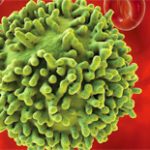“But there was more to know. When I tell a woman that she has lupus, one of her first questions is, ‘Doctor, will I be able to have children?’ For many years, we thought that pregnancy caused lupus to flare and should be avoided. This recommendation, however, was not based on strong data, and we knew that some women with lupus had uncomplicated pregnancies, while others had miscarriages or preeclampsia.
“To understand the mechanism of pregnancy failure in lupus, we developed a model of the disease in mice. It was a new area for me, and, perhaps because I approached it without a bias, I could test and prove a hypothesis that challenged long-held dogma. We showed that inflammation, particularly complement activation (and not thrombosis), was a key mediator of poor pregnancy outcome in APL-treated mice. We also found that drugs that block complement could prevent fetal death, growth restriction and preeclampsia in mice.

